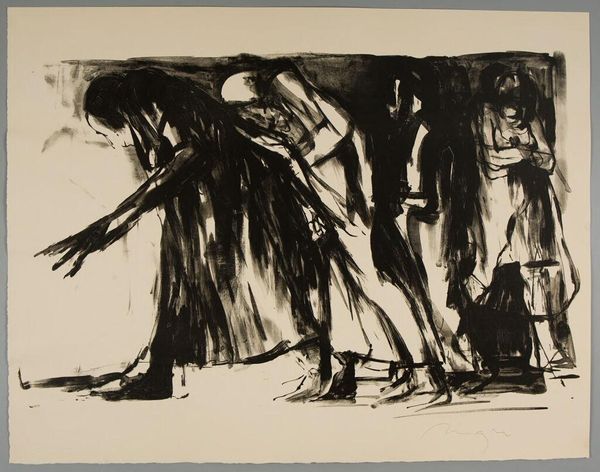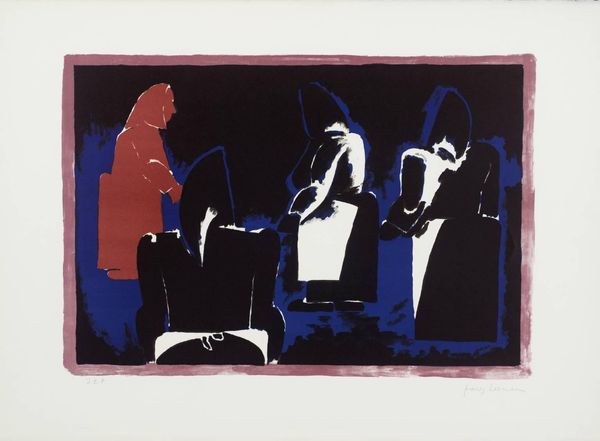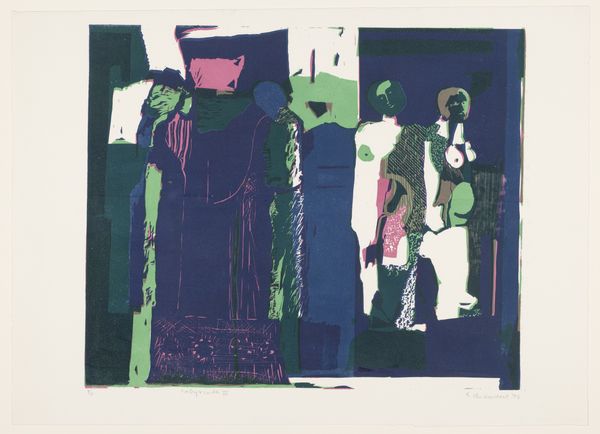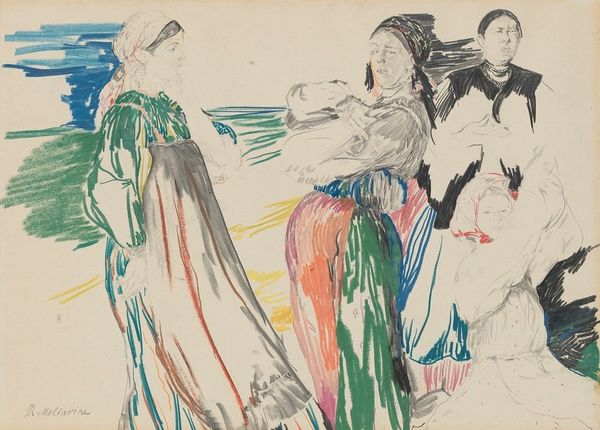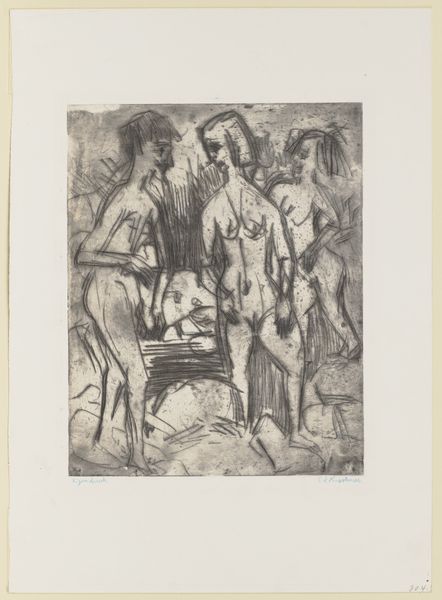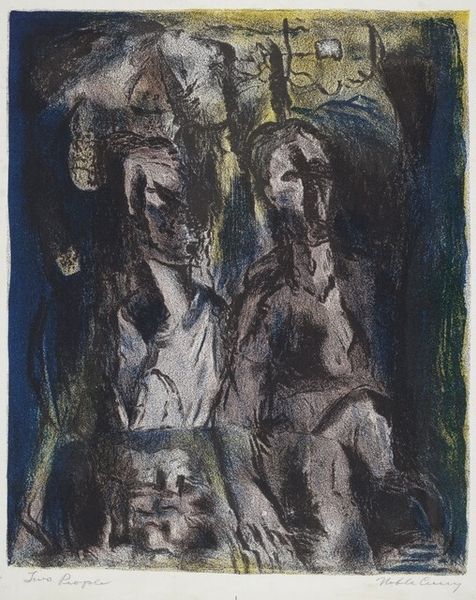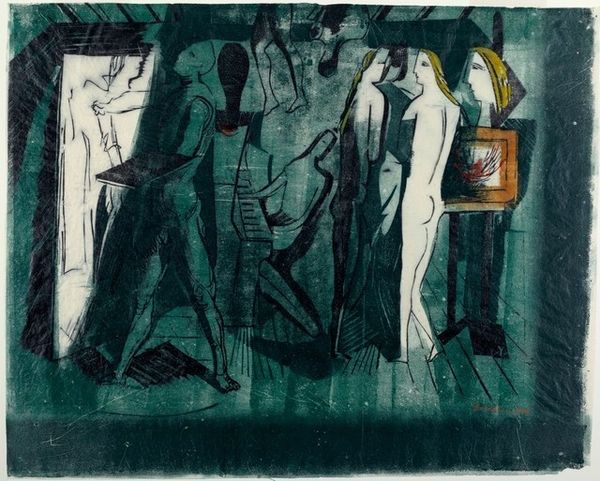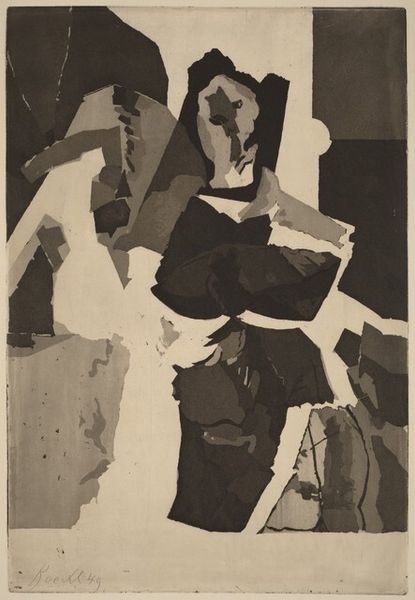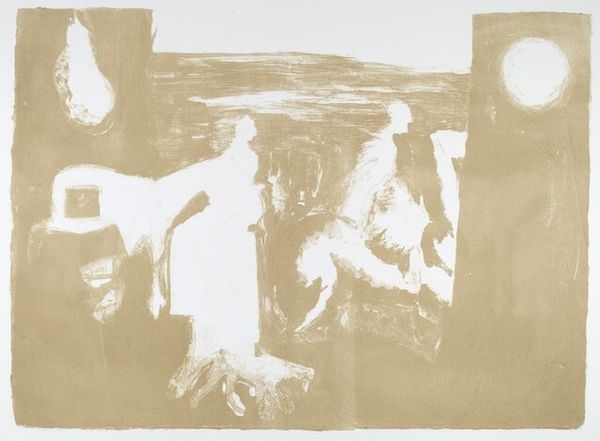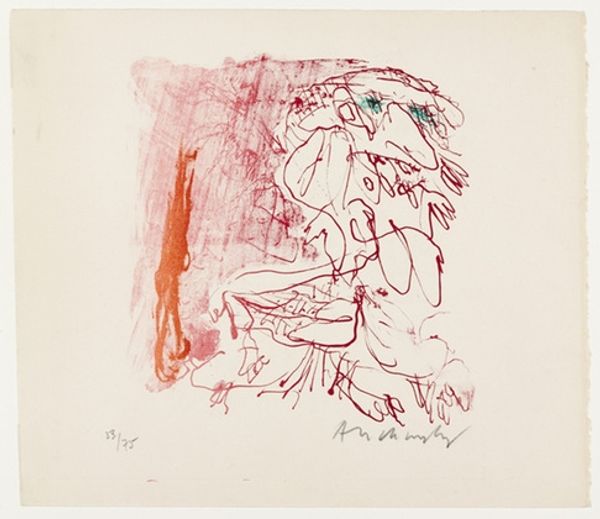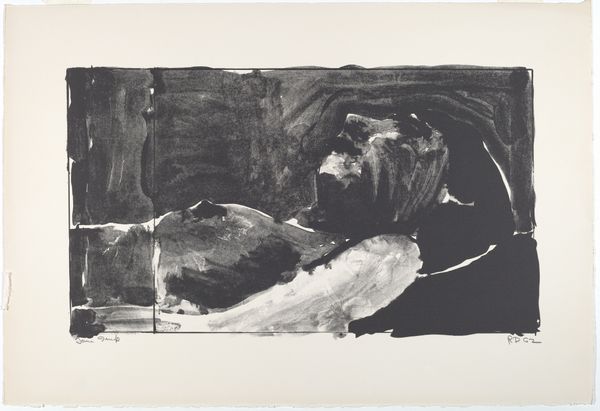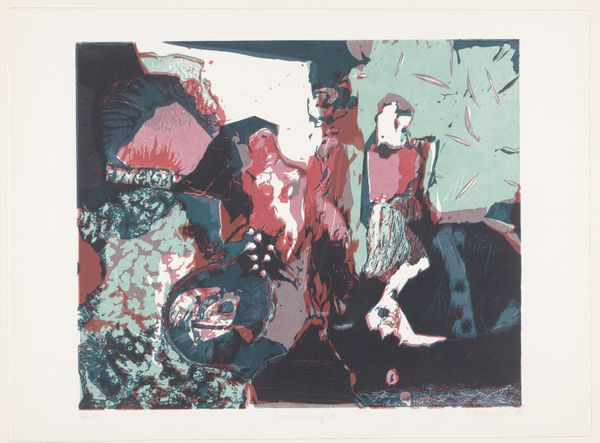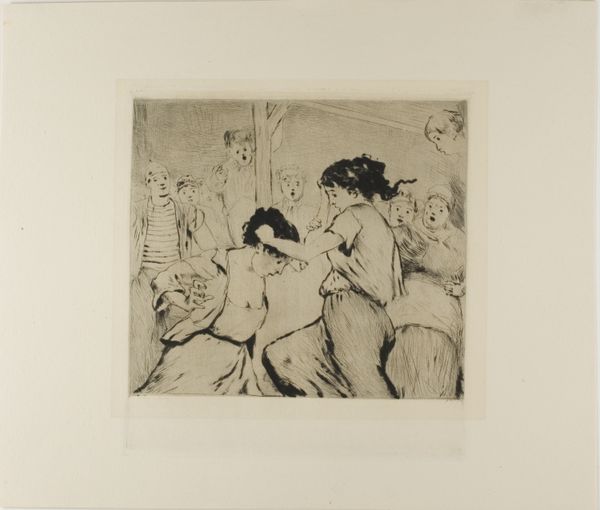
print, ink
# print
#
figuration
#
ink
#
remaining negative space
#
modernism
Dimensions: image: 61 × 85 cm (24 × 33 7/16 in.) sheet: 75.57 × 105.41 cm (29 3/4 × 41 1/2 in.)
Copyright: National Gallery of Art: CC0 1.0
Curator: Leonard Baskin's 1974 print, "At the Bureau", presents a rather haunting scene rendered in ink. What stands out to you initially? Editor: There’s a palpable sense of unease, even dread, evoked by the somber palette and distorted figures. It feels very Kafkaesque. The composition is striking with the stark, remaining negative space highlighting the figures. Curator: Indeed. Baskin often used his art to address existential themes and societal critiques, aligning with broader artistic movements questioning power structures after World War II. I am especially curious as to how the use of green is not just for aesthetic qualities, but what might that imply? Editor: Green often symbolizes envy or sickness. In this context, juxtaposed with the seemingly impassive figure in the foreground and using this color, might that mean it's a critique of institutional stagnation and perhaps the rot within bureaucratic systems, consuming those trapped within it? Baskin did live through some awful times in history, let us remember. Curator: That’s insightful. We have to look into these broader strokes to see a fuller narrative. The historical moment definitely shaped Baskin's artistic concerns and is probably not a straightforward figuration of an actual event. What do we notice then when considering figuration at the intersection of social structures and existential struggle? Editor: We witness an articulation of power dynamics, and perhaps the alienation experienced by individuals within these structures. I think that we all do at some time. This alienation also seems heightened, by the artist's bold usage of shadows that creates almost ghostly forms, which might evoke those silenced by institutions or forgotten within their machinery. It really underscores how the print could embody societal anxieties. Curator: I appreciate you taking into consideration how Baskin critiques institutions as impacting lived experience and in light of sociopolitical forces at that moment. Editor: A deeper look shows an incredibly powerful representation of human experiences as cogs, but not as important cogs, within dehumanizing systems. Thank you!
Comments
No comments
Be the first to comment and join the conversation on the ultimate creative platform.
